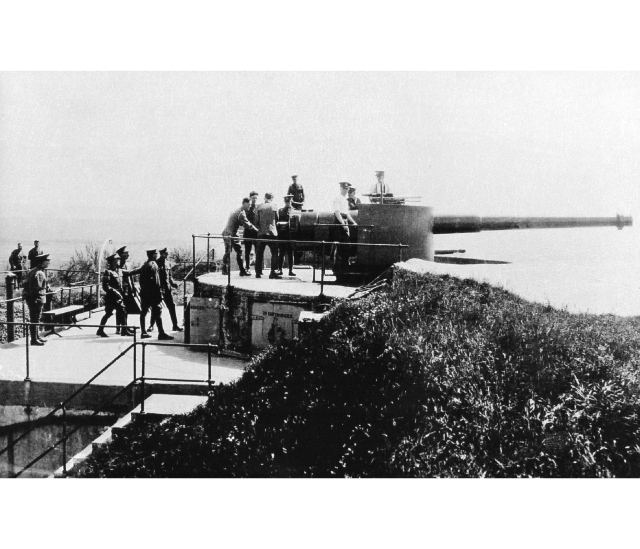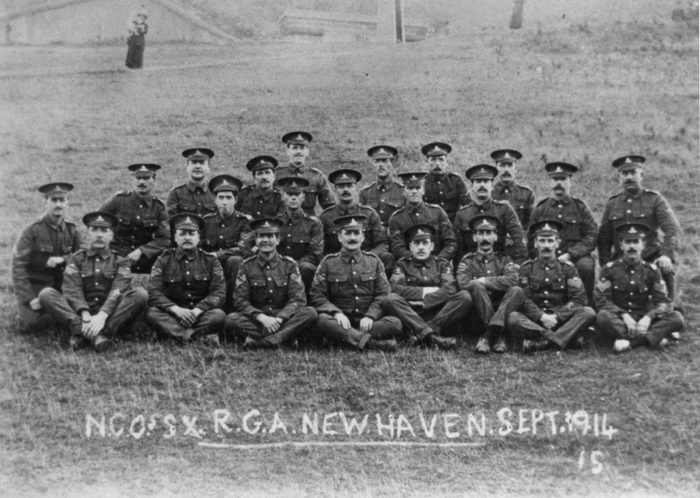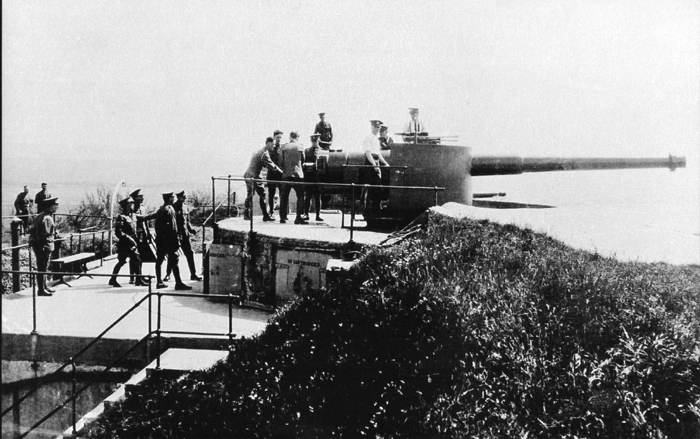Upon the outbreak of war in 1914, Sussex soldiers were quickly deployed to predetermined defensive positions along the coast, such as Newhaven Fort.
The main occupier of the Fort, Sussex Royal Garrison Artillery (R.G.A.), did not maintain a war diary during the Great War, a common occurrence for UK based Territorial Force (T.F.) units. The primary source of information about the Sussex R.G.A in the Fort is the memoirs of men who served in the Fort during the war. They give an invaluable insight into the occupiers and their activities in the Fort during this period.
The Sussex R.G.A. Company (T.F.) was based in Brighton and in July 1914 it was ordered to attend annual training camp at Newhaven.
‘It was decided that we should march from Brighton to Newhaven with full equipment, accompanied by the R.A.M.C. T.A. and R.A.S.C. T.A. who were also in the Gloucester Road drill hall and a horse drawn ambulance and wagon with our kit. The regular Royal Garrison Artillery were in occupation of the Fort at Newhaven with married quarters in Gibbons [Gibbon} Road and the Trumpet Band of the Depot under Trumpet Major Lyons met us the top of town and with much Gusto and blaring of bands we marched into camp. We carried out 6 ins gun practice until the 3rd August at the Fort and on Monday 4th August was a Bank Holiday Monday [Monday was actually 3rd August, not the 4th] and a day when wives were to visit their men in camp, but on Sunday evening we were told not to turn in but get kitted up to move off and at midnight we were ordered to fall in and quietly we marched down Money Bag Hill past the Sheffield Hotel along Fort Road and up Fort Hill. As we came abreast of the gymnasium No. 1 Deport, R.G.A. passed us on the way to pick up their guns and batteries for them to join the B.E.F. and with a quiet “Eyes Right” we saluted each other and we took over the Fort, which I understand is named ‘GLACIS’ which means apparently ‘on a hill’ with myself as a Boy Trumpeter and my father [Charles George Cornford] as Battery Sergeant Major.’
Corporal C.E. Cornford R.G.A
The following day, 3rd August 1914, was a Bank Holiday Monday:-
‘All the wives and relatives of the men turned up at the camp to visit their menfolk. The camp was empty and they walked up to the Fort in the hope of seeing (them) and no doubt having a pleasant day. The Fort gates were shut and all ranks confined to barracks, so they gathered in little groups on the Fort banks, their wives etc. gathered on the footpath which ran along the other side of the moat and the conversation went along these lines shouted over the distance
“Can’t you come out?”
“NO”
“You can”
“I can’t”
“When will you come home?”
“We don’t know”
This went on for some time much to the amusement of us younger men who were unattached. Tragically some of them never did return to Home and those that did although perhaps not wounded, remained scarred in mind and body but such is war’.
‘The 1914-18 war was on us and the Fort at Newhaven was to be our home to us, on and off, for the next five years. On because it was our Depot to which we returned after postings to various duties, and off when we were away with duties which were to take us to B.E.F. France, Mesopotamia and many other theatres. Anyway the first thing after we had crossed the bridge and marched under the long archway into the square was to man the guns and battery posts. Here we stood for about a week sleeping and living as best we could so as to be at instant readiness. In the meantime the rest of the organisation was to be carried out, barrack rooms prepared, gun crews detailed and generally getting down to prepare for what turned out to be a long stay, although everyone said it would all be over by Christmas.
NOTES:
1) There are date discrepancies in Cornford’s account but it would appear that the Sussex R.G.A. actually moved into the Fort on Monday 3rd August before war was declared on Tuesday the 4th August. However No. 1 Depot R.G.A. records state that it vacated the Fort on 5th August 1914, a Thursday.
2) A ‘glacis’ in military engineering is an artificial slope of earth used in late European fortresses so constructed as to keep any potential assailant under the fire of the defenders until the last possible moment.
This story was submitted by Keith Brain, Newhaven Fort










